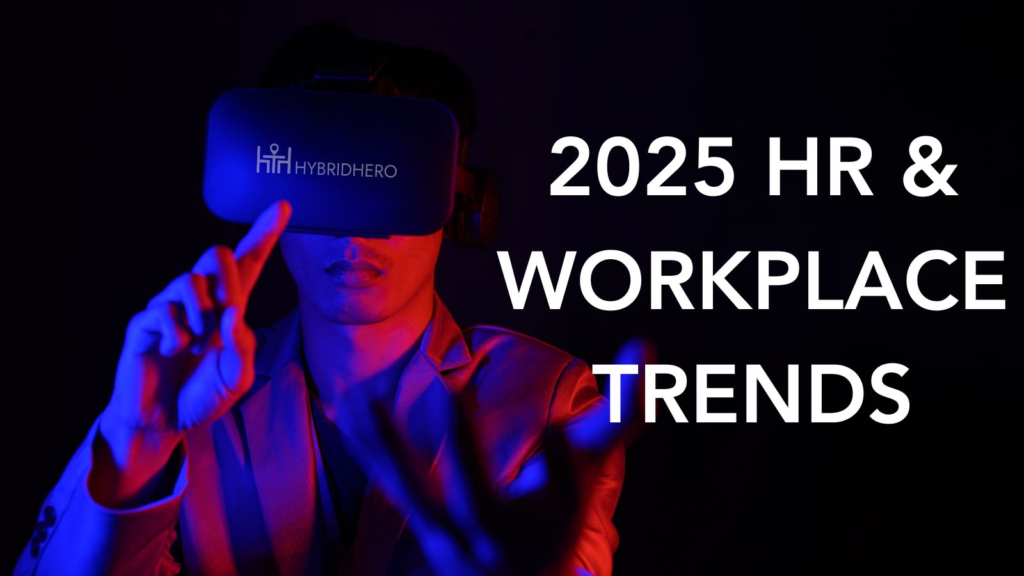The workplace in the United States has undergone a dramatic transformation in recent years, and 2025 is proving to be a pivotal year for hybrid work models. As companies like Google refine their policies, the conversation around productivity, work-life balance, and employee satisfaction is heating up. Hybrid work, which blends remote and in-office work, has become the dominant model for many U.S. businesses, with data showing that around 60% of companies now embrace this approach. This shift is not just a trend—it’s a fundamental change in how we work, and it’s sparking debates about what makes a workplace effective and fulfilling.

The Rise of Hybrid Work in 2025
The roots of hybrid work trace back to the COVID-19 pandemic, which forced companies to rethink traditional office setups. What started as a necessity has evolved into a preferred way of working for both employees and employers. By 2025, hybrid work has solidified its place as the go-to model for many organizations. According to recent studies, 64% of enterprise-level organizations with over 500 employees now operate under a hybrid framework, with employees typically spending three days in the office and two days working remotely. This “3-2” model has become a popular standard, balancing the need for in-person collaboration with the flexibility of remote work.
Why has hybrid work gained such traction? For employees, it’s about freedom and balance. Working from home cuts down on stressful commutes, saving workers an average of $42 per day compared to $61 for office-based days. It also allows for more time with family or personal pursuits, with 76% of hybrid workers reporting better work-life balance. For companies, the benefits are equally compelling. Hybrid models reduce the need for large office spaces, cutting real estate costs by 10-50%. They also boost employee retention, with hybrid workers 35% less likely to quit than their fully in-office counterparts.

Google’s Hybrid Work Experiment: A Case Study
As a tech giant known for innovation, Google has been a leader in shaping hybrid work policies. In 2025, Google continues to refine its approach, requiring most employees to spend three days a week in the office while allowing two days of remote work. This policy aims to foster collaboration and maintain a sense of community while preserving flexibility. However, Google’s journey hasn’t been without challenges. Early attempts at hybrid work revealed gaps in communication and creative bottlenecks, with employee satisfaction dropping 62% when rigid in-office mandates were enforced without clear performance metrics.
To address these issues, Google has invested heavily in technology and office redesign. The company has created “office neighborhoods,” where teams are grouped to encourage spontaneous interactions. Meeting rooms now feature advanced video conferencing tools to connect in-office and remote workers seamlessly. Google’s approach highlights a broader trend: companies are moving away from one-size-fits-all policies and tailoring hybrid models to fit specific teams and roles. For example, sales teams might spend more days in the office for client meetings, while product development teams may prioritize remote work for focused tasks.
Google’s experience offers valuable lessons. Real-time analytics and workforce tools are critical for spotting productivity trends and addressing issues early. Regular check-ins and employee feedback also help refine policies, ensuring they align with both business goals and worker needs. Google’s shift underscores that hybrid work isn’t just about splitting time between home and office—it’s about creating an environment where employees can thrive.

Productivity: A Mixed Picture
The debate over productivity in hybrid work settings remains lively. Some studies show that hybrid workers are 18% more productive than their fully in-office or fully remote peers, thanks to fewer distractions and reduced commute stress. For instance, a Stanford University study found that remote workers outperform in-office colleagues by 13% in certain tasks. Companies like HubSpot and Automattic report that giving employees the freedom to choose their work environment boosts engagement and output.
However, not all data paints a rosy picture. Google’s early hybrid policies showed a 13% productivity boost on paper, but deeper issues like creative slowdowns and poor team handoffs went unnoticed without detailed monitoring. This highlights a key challenge: measuring productivity in a hybrid world is complex. Traditional metrics like hours worked or tasks completed don’t capture the full picture. Companies are now investing in tools to track engagement, collaboration patterns, and outcomes rather than just attendance.
The shift to outcome-based management is gaining momentum. Instead of focusing on hours spent in the office, businesses like Allstate and Cloudflare empower team leaders to set goals based on results. This approach recognizes that productivity varies by role, task, and individual work style. For example, creative tasks may benefit from in-person brainstorming, while data analysis might be more efficient at home. By prioritizing outcomes over rigid schedules, companies are fostering accountability and boosting morale.
Work-Life Balance: A Top Priority
One of the biggest draws of hybrid work is its impact on work-life balance. A 2025 survey found that 83% of employees value work-life balance over pay, making it a top factor in job satisfaction. Hybrid models allow workers to tailor their schedules to personal needs, whether it’s caring for children, pursuing hobbies, or simply avoiding long commutes. This flexibility has led to a 15% reduction in burnout symptoms among hybrid workers compared to those in traditional office settings.
Yet, challenges remain. About 24% of hybrid workers struggle with blurred boundaries between work and personal life, sometimes working longer hours or checking emails late at night. Companies are addressing this by setting clear guidelines, such as designated “focus hours” for uninterrupted work and “reset days” to help employees recharge. Google, for instance, offers periodic company-wide days off to combat burnout. Other organizations are adopting international practices, like France’s “right to disconnect,” to encourage healthier work habits.
Challenges and Solutions
While hybrid work offers many benefits, it’s not without hurdles. Communication gaps are a common issue, with 37% of companies reporting inconsistent team interactions. Remote workers may feel disconnected, with 29% citing feelings of isolation. To bridge this gap, businesses are investing in collaboration tools like Zoom, Microsoft Teams, and Slack, which streamline communication across locations. Regular in-person meetings or “anchor days” also help foster team cohesion, with co-working days boosting morale by 18%.
Another challenge is ensuring equity. Hybrid models can unintentionally favor in-office workers, who may have more face-time with managers. To address this, companies are training leaders to manage hybrid teams with empathy and trust, focusing on outcomes rather than physical presence. Data-driven tools also help ensure fair access to resources, with 20% of employees reporting challenges accessing office tools remotely.
The Future of Hybrid Work
As we move deeper into 2025, hybrid work is evolving beyond a simple split between home and office. Companies are experimenting with flexible schedules, four-day workweeks, and AI-driven tools to boost efficiency. Offices are being reimagined as collaboration hubs, with spaces designed for brainstorming and social connection rather than traditional desks. Employee feedback is shaping policies, with only 11% of workers currently having a say in hybrid schedules—a number that’s likely to grow as companies prioritize inclusion.
The debate over hybrid work isn’t going away. High-profile return-to-office mandates, like Amazon’s push for five-day office weeks, have sparked backlash, with 64% of employees saying such policies erode trust in leadership. Meanwhile, businesses that embrace flexibility are seeing results: 40% report increased productivity, and 25% note better employee retention. The key to success lies in adaptability—listening to employees, leveraging technology, and focusing on outcomes.
Conclusion
Hybrid work models are defining the U.S. workplace in 2025, with companies like Google leading the charge. By balancing flexibility with collaboration, these models are boosting productivity and work-life balance while addressing challenges like communication and equity. As businesses continue to refine their approaches, the future of work looks dynamic and employee-centered. For workers and employers alike, hybrid work isn’t just a compromise—it’s a smarter way to work.
Read More:- Key swing states shaping the 2024 presidential election results





